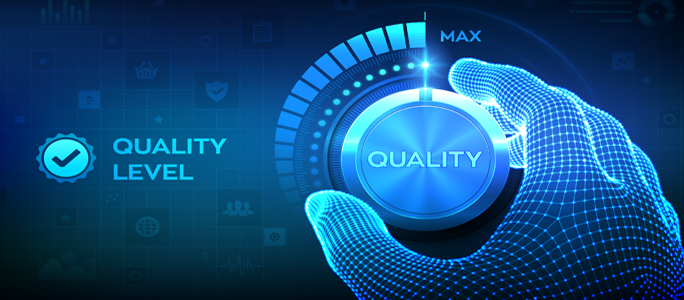
You’ve come to our blog because you recently purchased a new quality management software system, which is a tremendous step for the growth and success of your business.
The impact of implementing a Quality Management System (QMS) on your entire firm can be enormous. As per one study, the typical QMS deployment delivers a 300 percent return on investment. Additionally, according to empirical studies, organizations implementing QMS also achieve less easily measured rewards, such as a greater consciousness of quality, happier customers, enhanced brand valuation, and more consistent operations.
QMS deployment delivers a 300 percent return on investment.
However, putting it into action is a difficult task that many businesses, including yours, face. As for you, undoubtedly, it is hard to determine how extensive your implementation plan should be. The right implementation will optimize the value of QMS, allowing you to immediately reap the benefits of the software’s offerings.
That’s why we’ve put together a ten-step QMS implementation plan. Regardless of your industry, the following steps will ensure you have a successful implementation and get the most out of your QMS systems. So, read on!
Key steps to QMS implementation checklist
1. Define and communicate the flow of your main business process
Process maps are critical for determining accountability. The creation of process maps will compel the organizations to visualize and define its processes. During this time, you will also be able to determine the interaction sequence of those processes.
2. Establish a Quality Policy
Your Quality Policy defines the organization’s quality expectations. The objective could be exactly what customers require: a high-quality mission. Never forget the importance of being customer-centric (which may be Quality, Customer Satisfaction, and Continuous Improvement) when selecting a quality management system.
3. Define your quality objectives
Objectives are required in all quality management systems. Each employee must be aware of the impact of the defined objectives on quality. Your quality policy defines your quality objectives. It’s measurable and implemented across the business.
The objective could be in the form of key success factors like Product Quality, Process Improvement, Financial Performance, Customer satisfaction, Share of the Market, etc. These performance-based indicators serve as a metric for ensuring if the organization is on track to achieve its objectives or not.
4. Create metrics for tracking and monitoring data.
The Metrics are essential to keep a track of progress once the essential success criteria are identified. Creating the metrics can be done with the use of the data reporting technique that gathers specific data. The analyzed information should be shared with the leaders at all stages. This method’s goal is to raise the customer satisfaction index score. There must be a goal and a metric for identifying whether or not the goal was accomplished.
5. Define defects every process
Non-conformance occur as a result of a product flaw or a process flaw. A flaw must be measured and remedied whenever it arises. So, determining the necessary corrective action is the key. When defining your flaws, keep the following in mind:
- Determine the size of the operation.
- Determine product and process flaws.
- Establish a procedure for recording defects.
- Define a procedure for reporting faults in the appropriate forms.
6. Create records and documents
Some documented information and formats are required by the QMS. Begin with the bare minimum of documents and expand as needed.
- As per the business strategy, create mandatory document information.
- Make quality policies, procedures, and forms a priority.
- For each defined process, create documented information and formats (records).
7. Define the Quality Assurance Process
Internal audits, management reviews, corrective and preventative action processes, and communication processes are all part of your quality method.
8. Determine Your Training Requirements
Everyone must demonstrate competence in their job. Training is simply the beginning; it can be conducted on the job, in a classroom, or through e-learning. Internal auditor competency and Corrective Action training are two significant training areas. Also, it must include training on Failure Modes Effects Analysis (FMEA).
9. Make use of the Quality Management System.
The use of a quality management system ensures that the best quality product is produced. During the procedure,
- Collect and document non-conformance.
- Examine the information in order to take corrective and preventative action.
- As and when necessary, review FMEAs for risk and actions.
- Conduct management reviews and internal audits.
10. Improve Performance by Measuring, Monitoring, and Implementing Activities
Using a quality management software includes gathering information. Analyze this data to see if it is suitable for usage and if the desired outcomes may be obtained from it or not. For this, you need to:
- Keep a track of your Quality Objectives and how they’re performing.
- Establish a few new performance benchmarks.
- Recognize trends, patterns, or correlations in the data to determine the likelihood of improvement.
It’s time to take action if you’ve discovered trends in your data. The purpose is to improve things, which can be accomplished by:
- Organizing your possibilities for improvement
- Choosing prospects who make a difference is a difficult task.
Finish Up
Now is the time to implement a QMS system in your company following these steps and work toward preventing corporate failure. If you are interested in learning more about quality management, I highly recommend reaching our experts.





